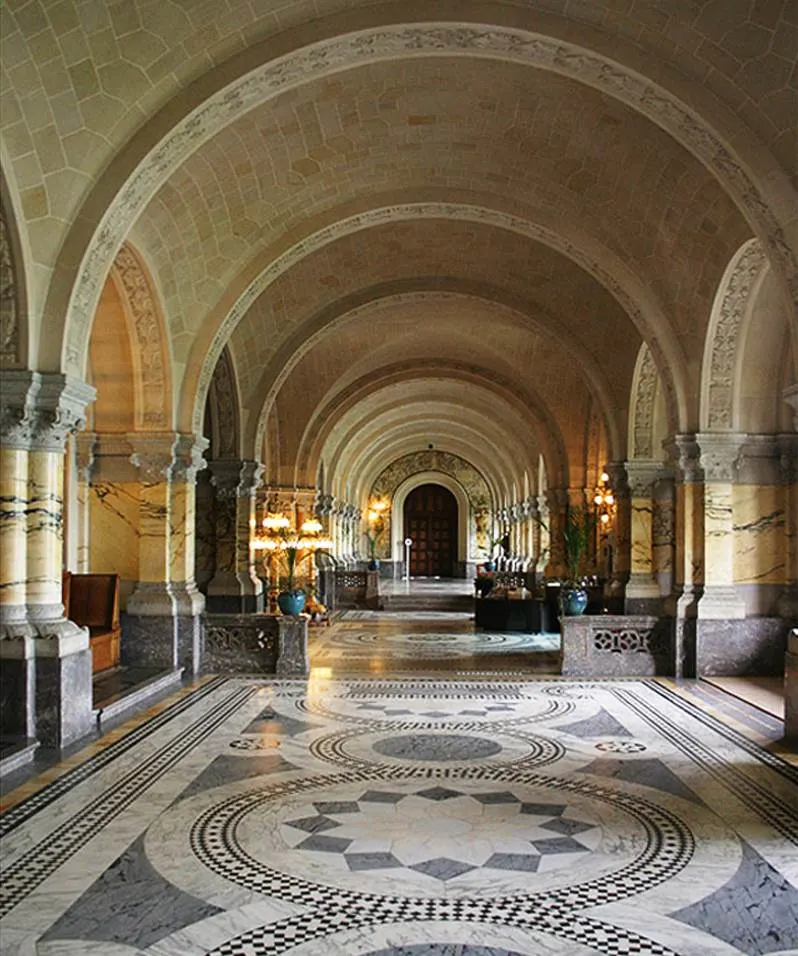One of the final examples of Renaissance Revival architecture is located in the northern part of a large city in the Netherlands.
It’s one of the most important buildings in the country because it houses several international institutions and organizations.
In this article, you’ll discover some of the most interesting facts about the Peace Palace in The Hague, a remarkable feat of architecture in The Hague for multiple reasons.
1. It’s located just northwest of a palace owned by the Dutch Royal family
The Peace palace is a large landmark building in the northern part of The Hague, a large city on the North Sea coast of the Netherlands.
The Hague is an important city in the country because it serves as both its royal and administrative capital. This pretty much means it’s the actual capital of the Netherlands.
Nearly 2.4 million people live in the extended metropolitan area of The Hague which also includes Rotterdam, the country’s second-largest city just south.
The palace is located just a few hundred meters northwest of Noordeinde Palace, one of the three official residences of the Dutch Royal family.
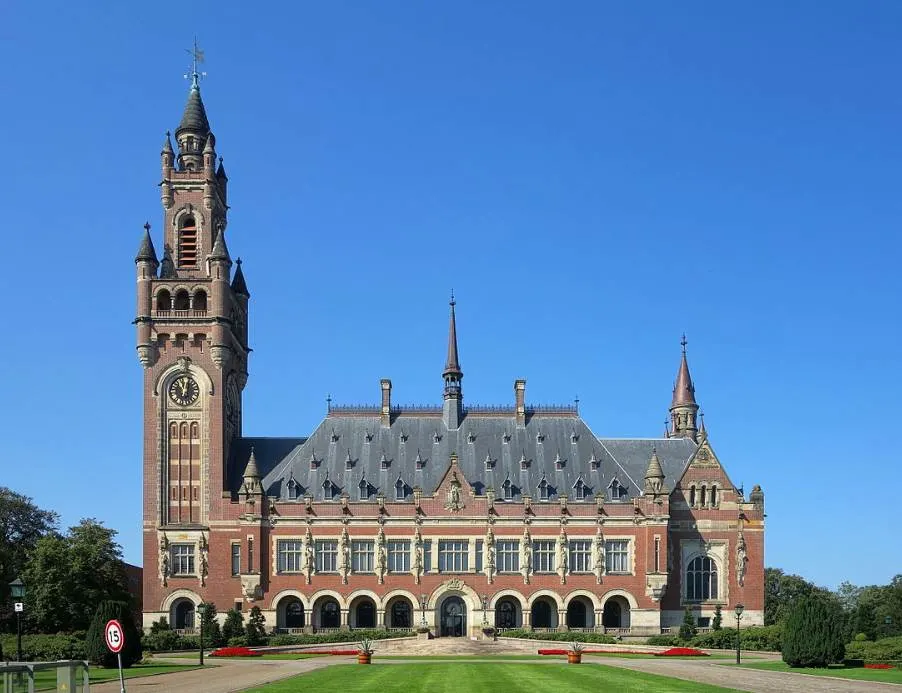
2. It was funded by a rich American industrialist in the early 20th century
The concept of building a palace that would serve as the permanent home of the Permanent Court of Arbitration (PCA) started back in 1900.
The idea materialized when Russian diplomat Friedrich Martens (1845-1909) and American diplomat Andrew Dickson White (1832-1918).

The discussion between this unlikely duo resulted in White trying to raise funds from Scottish-born American industrialist Andrew Carnegie (1835-1919).
The steel magnate was one of the richest men on the planet in the late 19th century and spent a lot of his fortune on philanthropic ideas in the first two decades of the 20th century.
White managed to convince Carnegie and he donated $1.5 million for the construction of the building. That’s the equivalent of over $50 million today when adjusted for inflation.
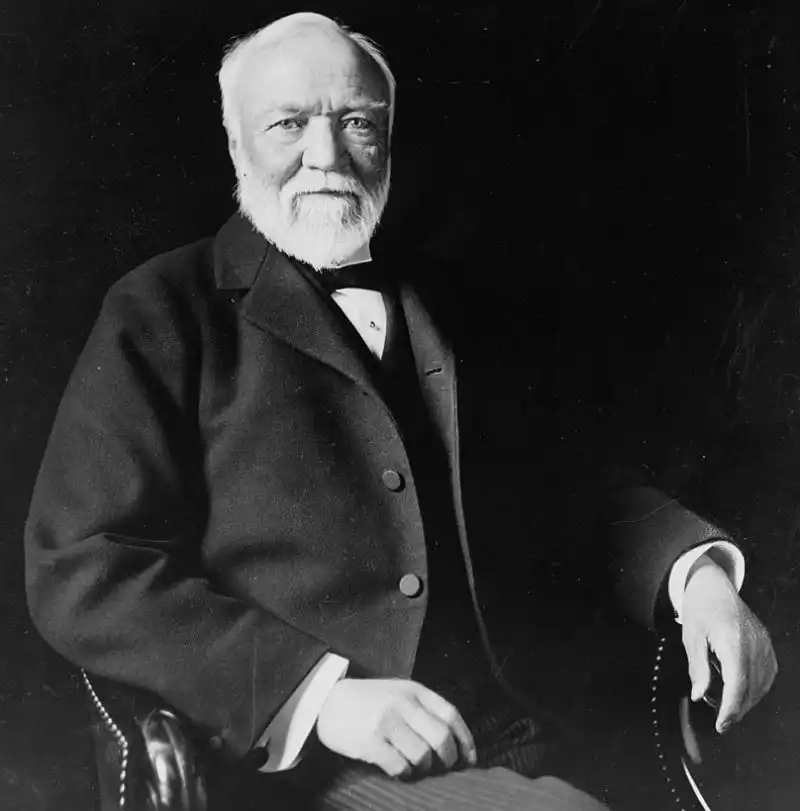
3. The building was designed by a French architect and was initially much bigger
An international architectural competition was launched to find a suiting design shortly after the funds to build the palace were secured.
The Carnegie Foundation that managed the project was established in 1903 and it’s still headquartered in the Peace Palace today.
French architect Louis Marie Cordonnier (1854-1940) won the competition out of 216 international submissions.
His design was completed in the Neo-Renaissance style and the building is considered to be the final structure of this architectural movement. It incorporates an eclectic mix of classic Renaissance architecture.
His initial design featured 2 bell towers in front and two at the back but this was reduced to just 1 on both sides due to budget constraints. The adjoining library building in his design was incorporated into the palace itself.
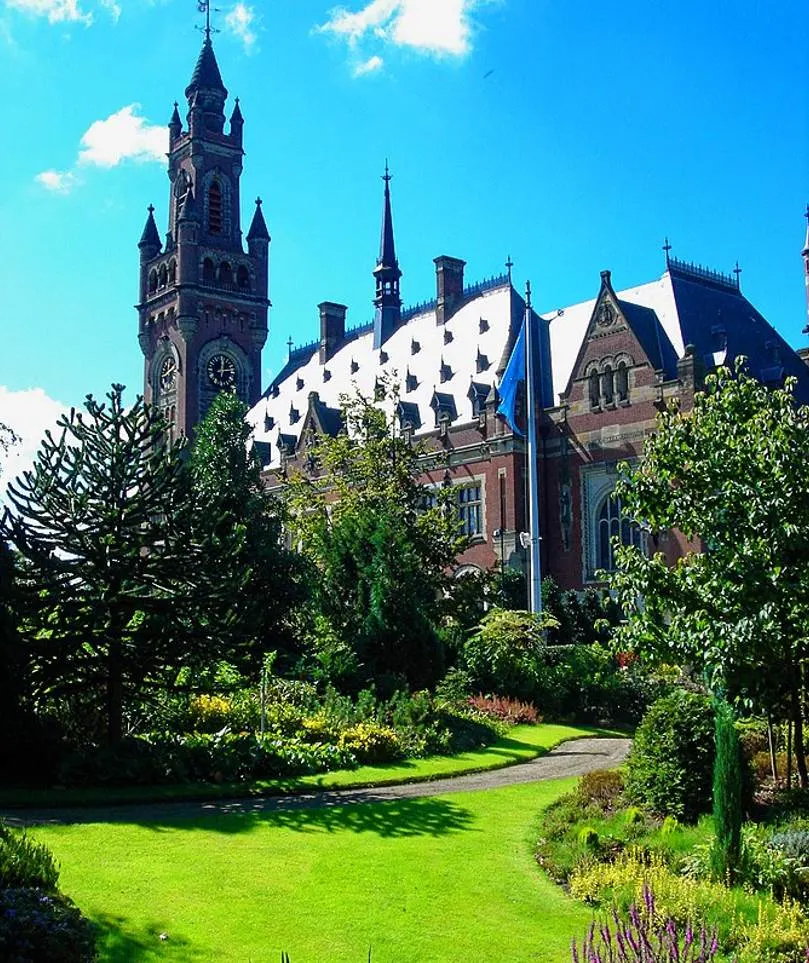
4. Peace Palace was completed the year before World War I broke out
The cornerstone of the building was laid during the Second Peace Conference in 1907 and it was finally completed in 1913.
The opening ceremony of the building took place on August 28, 1913, and it was attended by numerous prominent people, including the Dutch Royal Family and Andrew Carnegie.
During this inaugural event, Andrew Carnegie gave a somewhat ironic speech saying:
The end of war is as certain to come, and will come soon, as day follows night.
Little did he know that a World War would break out the following year followed by a second one less than 3 decades later.
5. The palace garden was designed by a renowned British landscape architect
The palace borders Zorgvliet Park and was located on the outskirts of the city of The Hague upon completion.
Another competition was held in 1908 for the palace garden design which was won by British landscape designer Thomas Hayton Mawson (1861-1933).
His main talent was to transform a garden into an extension of the building. He achieved this magnificently, although he had a limited budget.
The water that flows through the garden is a natural creek that was modified to suit the designer’s needs.

6. The interior of the building is decorated with gifts from all around the world
The interior of the Peace Palace is just as impressive as its exterior. It features gifts from all around the world. Some of these gifts are:
- A vase from Russia that weighs 3.2 tonnes
- Doors from Belgium
- Marble from Italy
- A fountain from Denmark
- Wall carpets from Japan
- A clock for the clock tower from Switzerland
- Persian rugs from Persia
- Wood from Indonesia, Brazil, and the United States
- Wrought-iron fences from Germany
All these gifts were incorporated into the building’s design and were donated as a sign of support for the project.
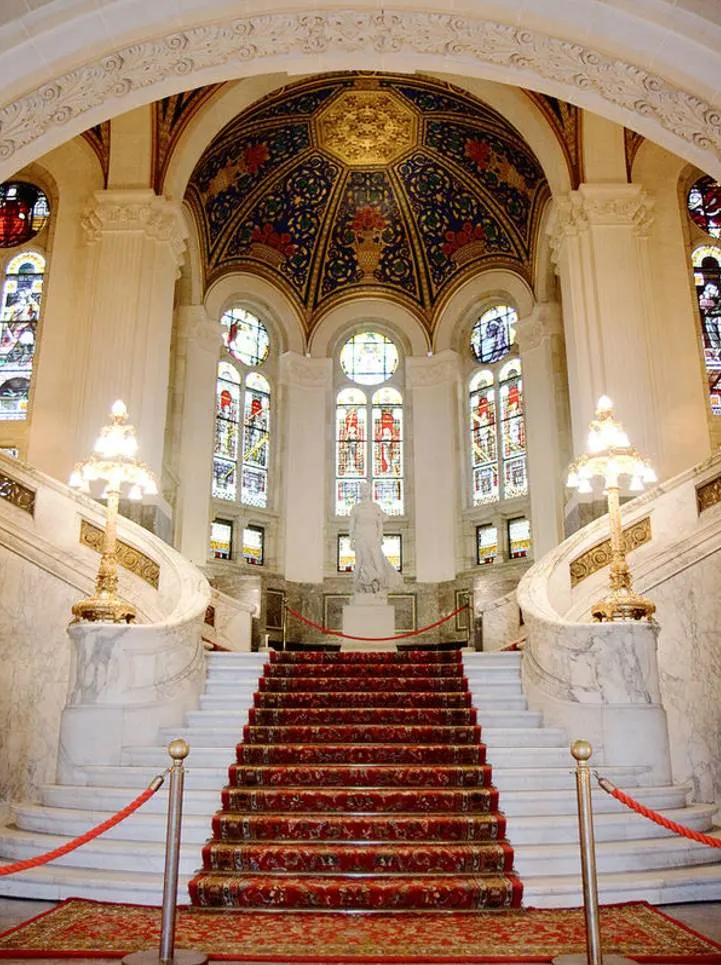
7. The palace features a large number of busts of prominent peace advocates
The gifts inside the building aren’t the only attractions. The interior is decorated with a large number of busts of important peace advocates from all around the world.
The busts of William Randal Cremer, Mahatma Gandhi, Ruy Barbosa, and Nelson Mandela are just a few statues that decorate the interior of the building.
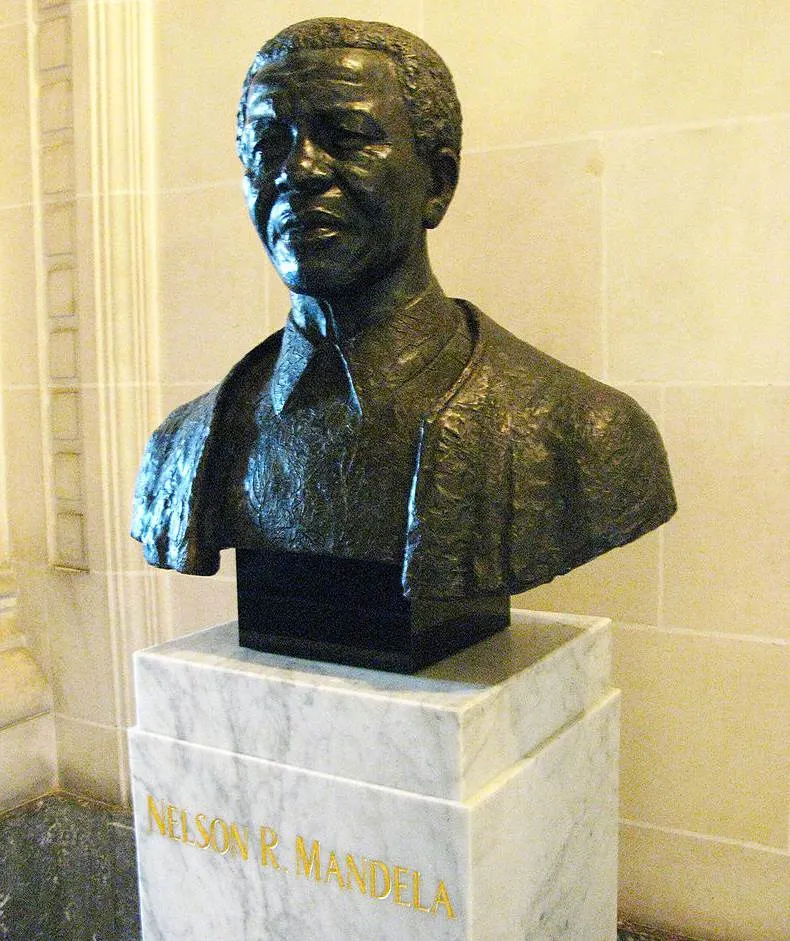
The man who certainly deserves a statue as well was the man who paid for the construction of the building, Andrew Carnegie.
His bust was placed in front of the original plan of the palace (which was reduced due to budget constraints).
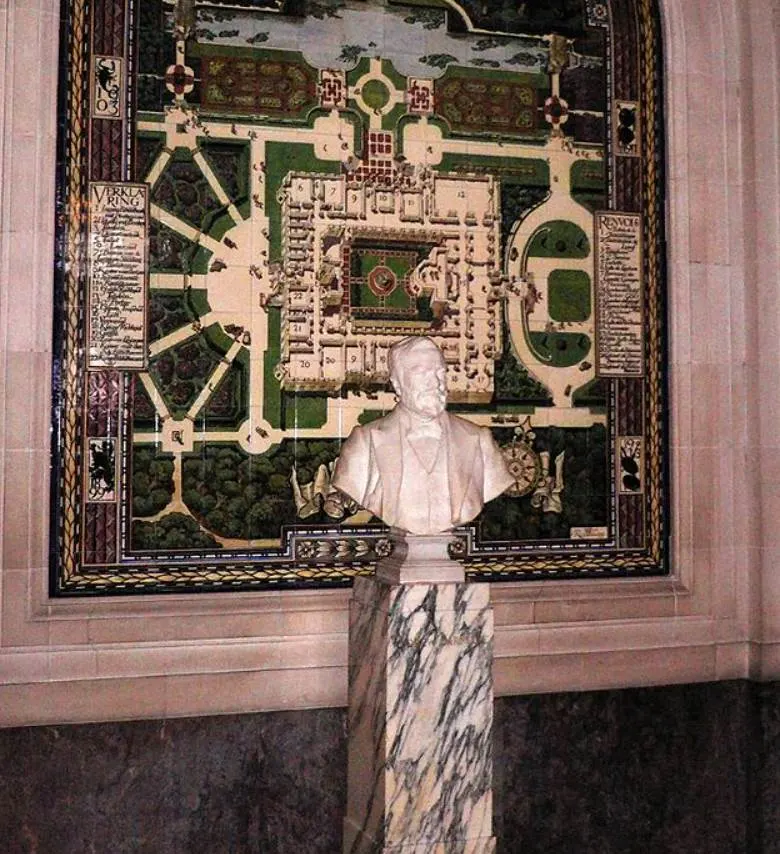
8. You can visit the palace and guided tours are available
The building is the home of the Carnegie Foundation and houses several important institutions, including:
- The International Court of Justice, the judicial body of the United Nations.
- The Permanent Court of Arbitration (PCA)
- The Hague Academy of International Law
- The Peace Palace Library
It also serves as a tourist attraction in The Hague that can be visited. Guided tours are available so you can learn all about this important building in history.
